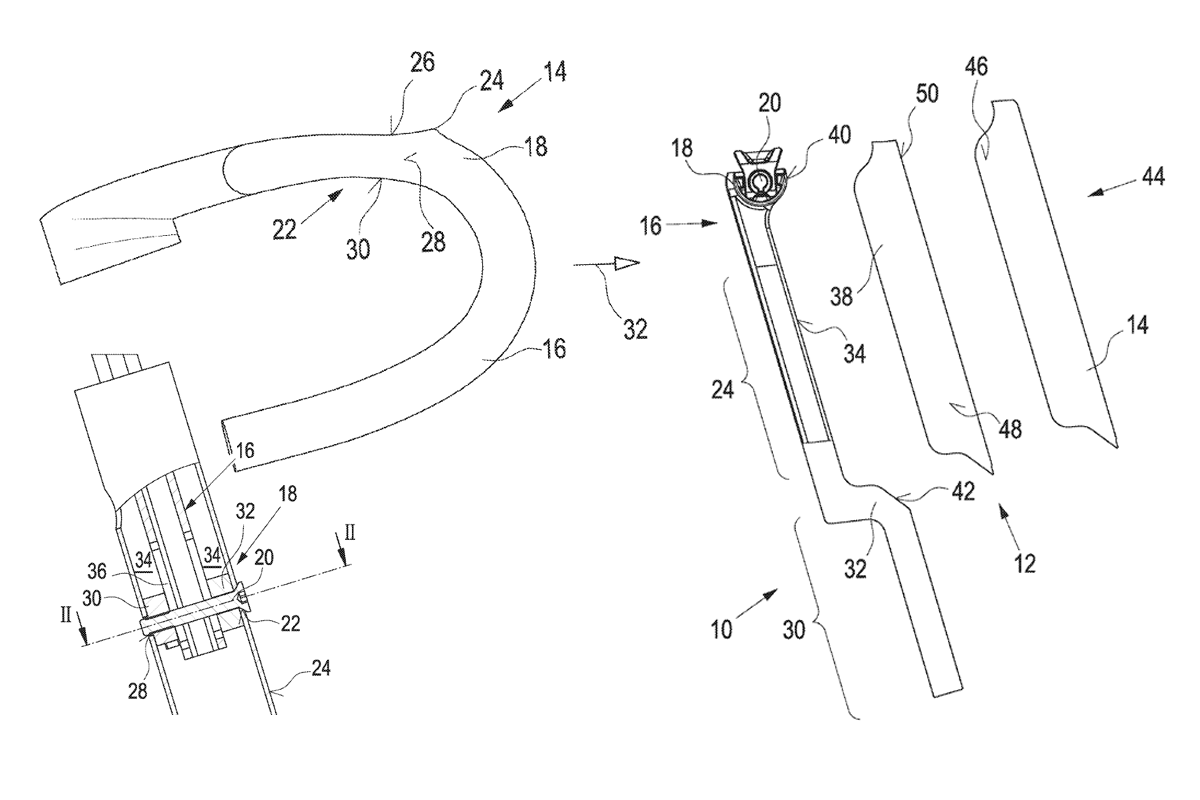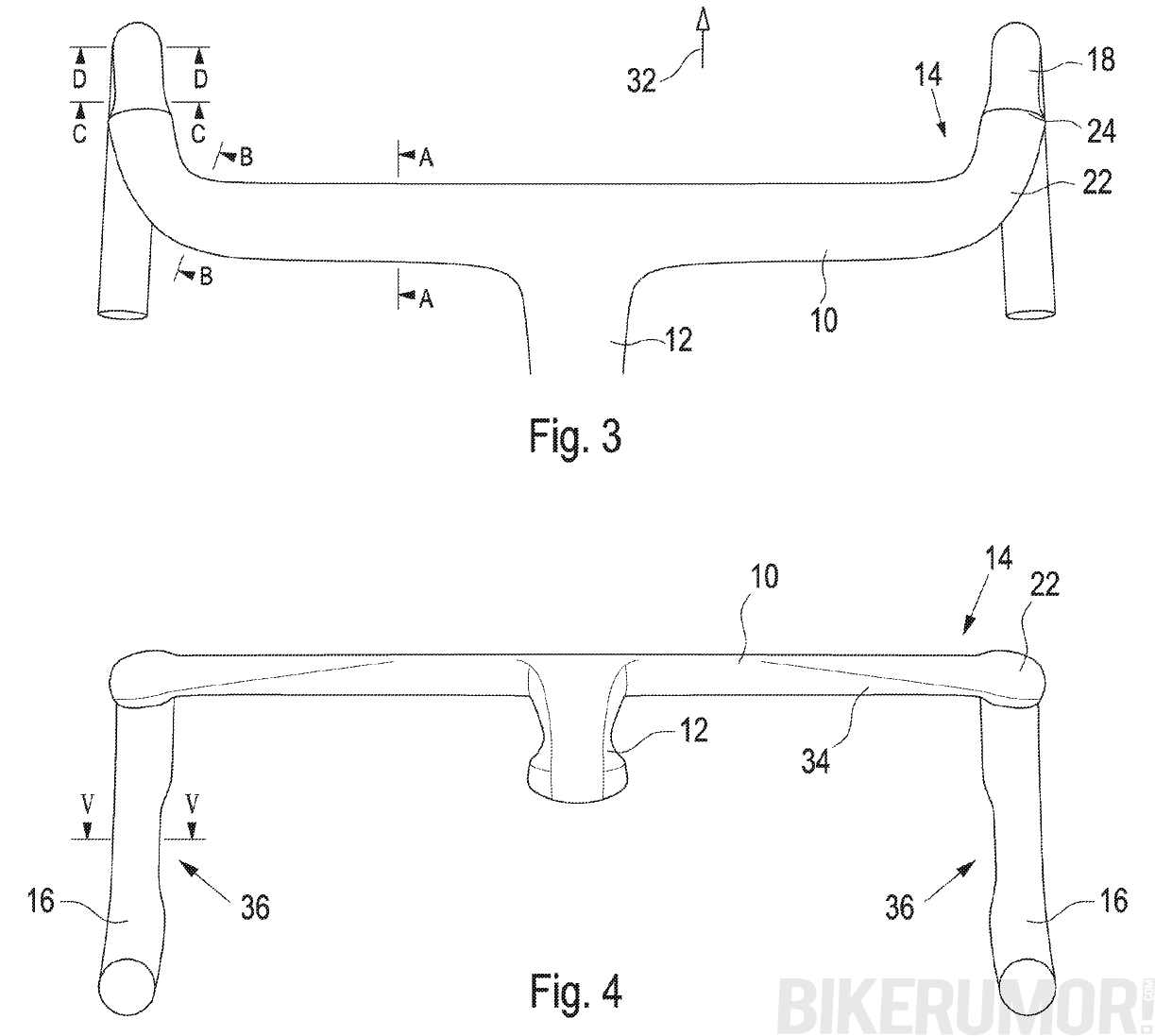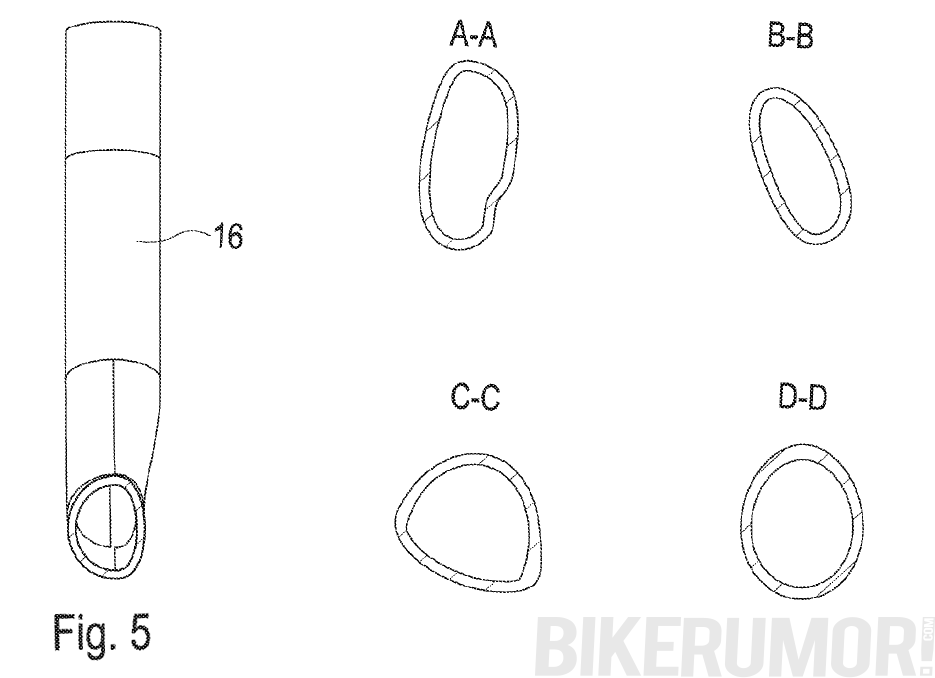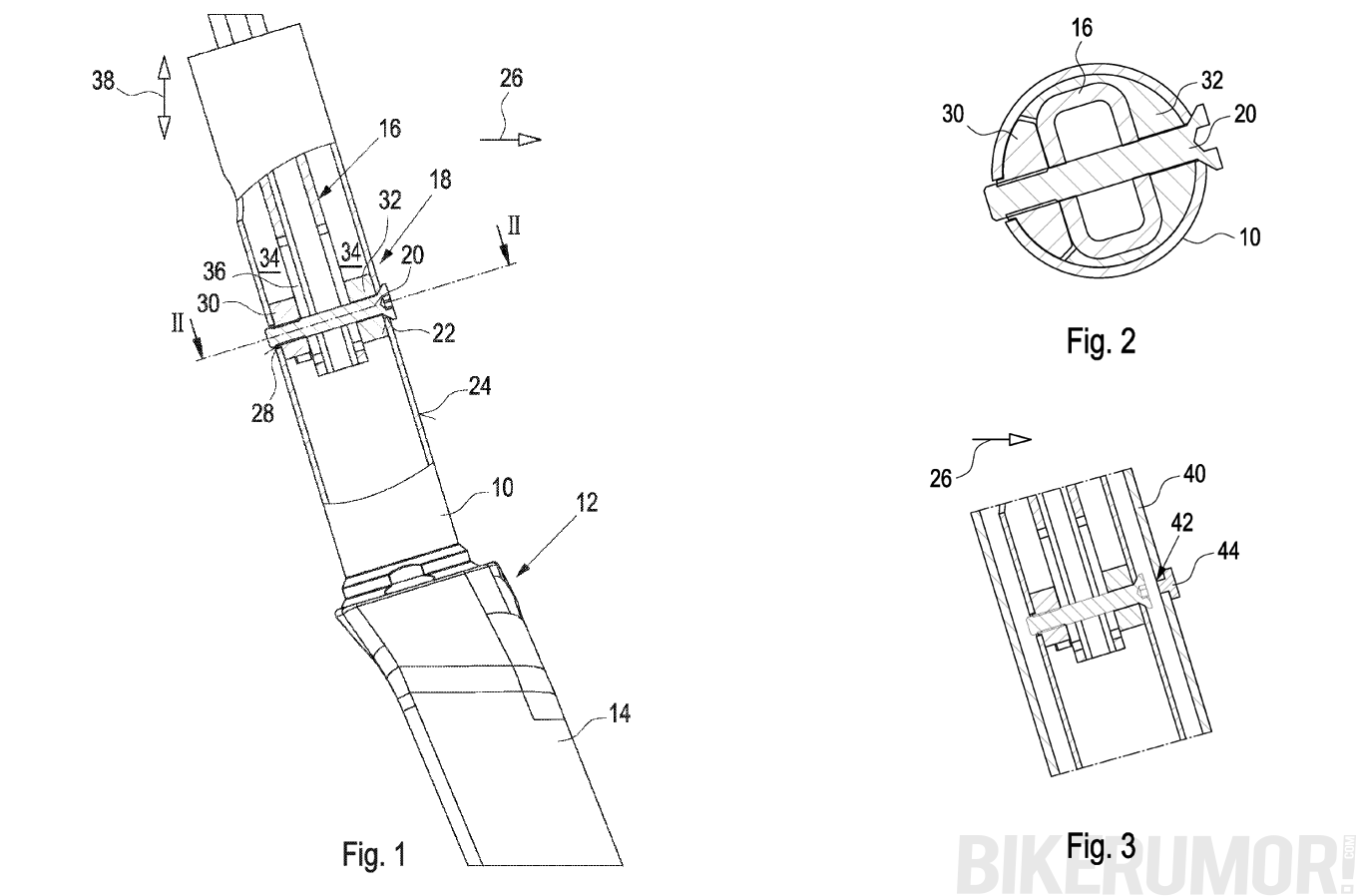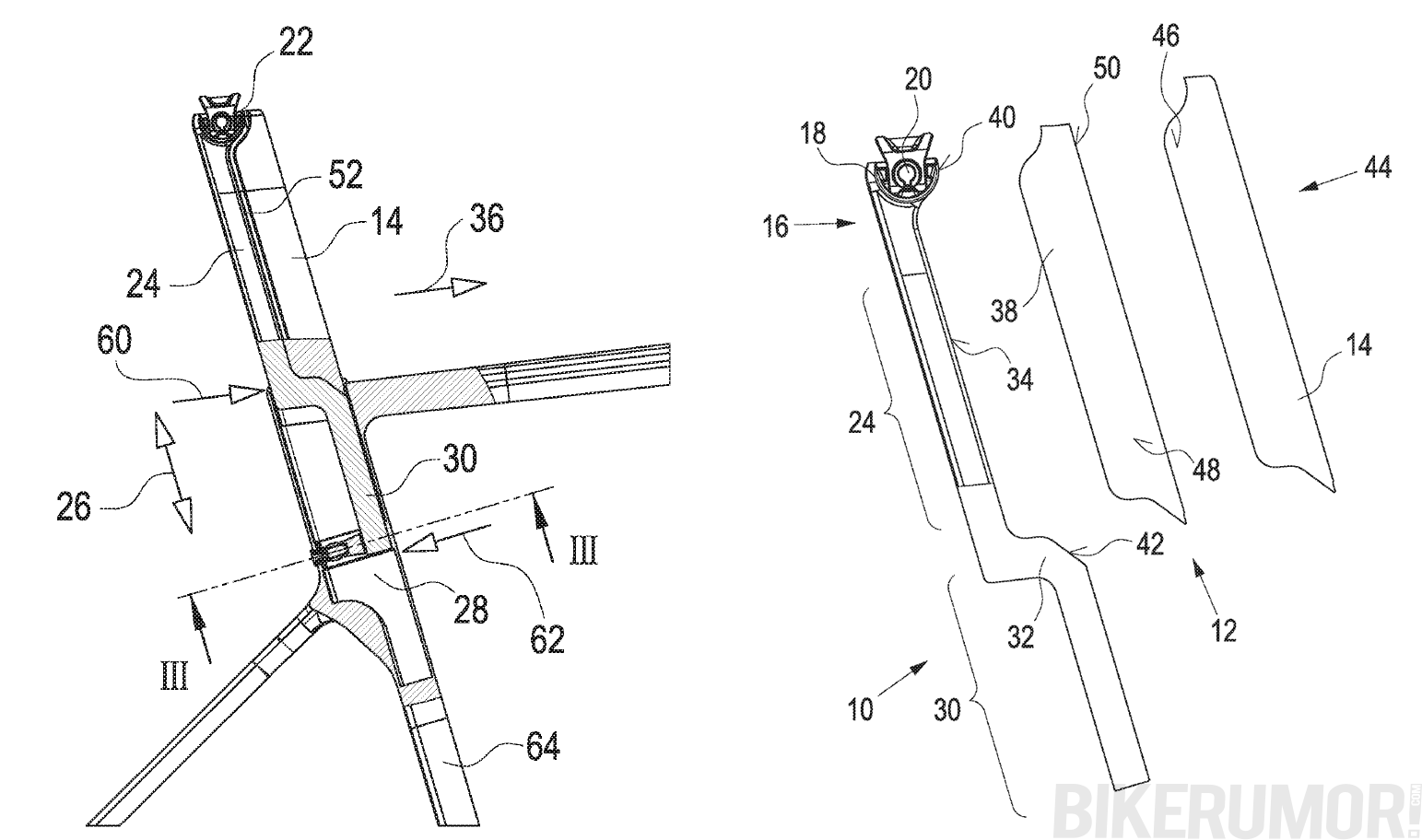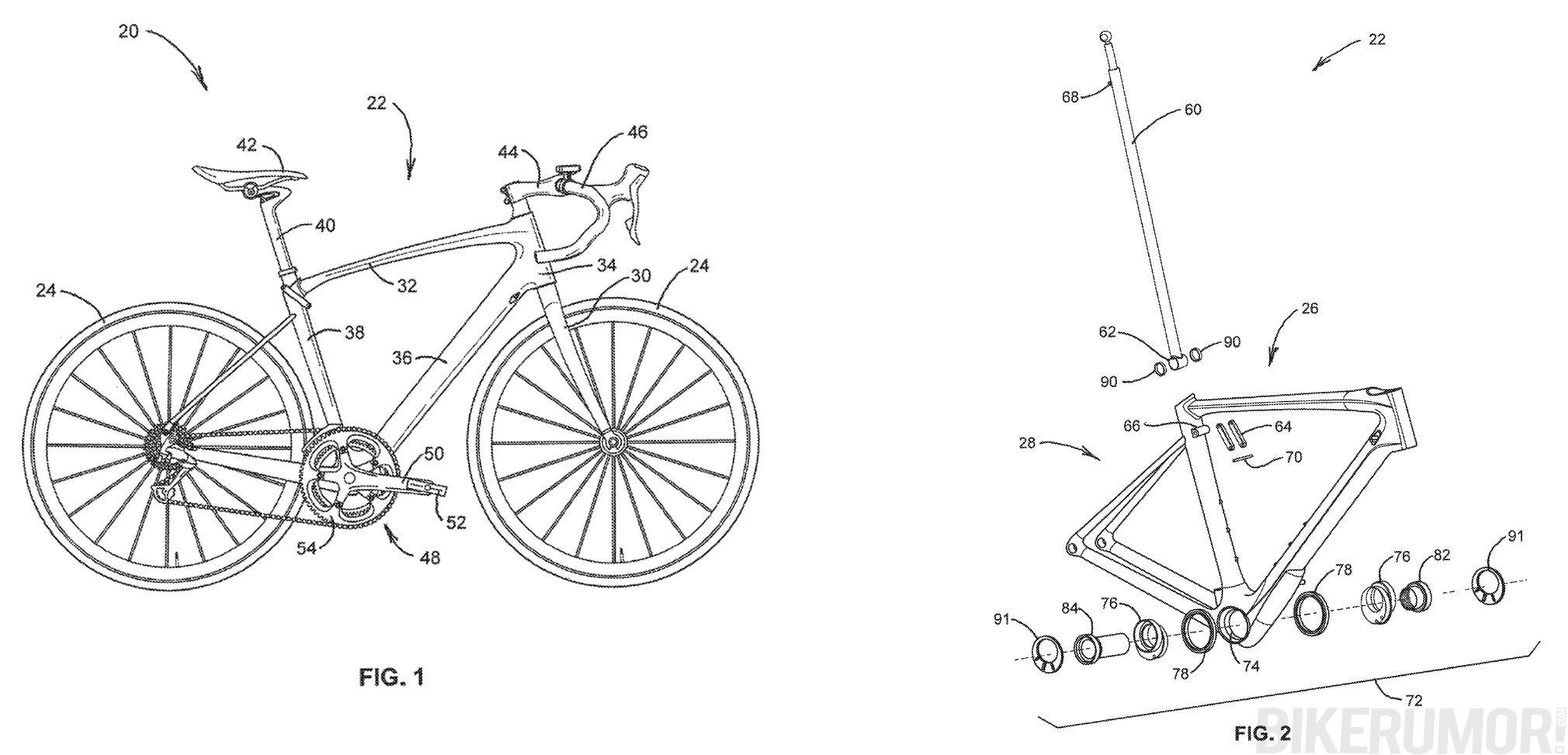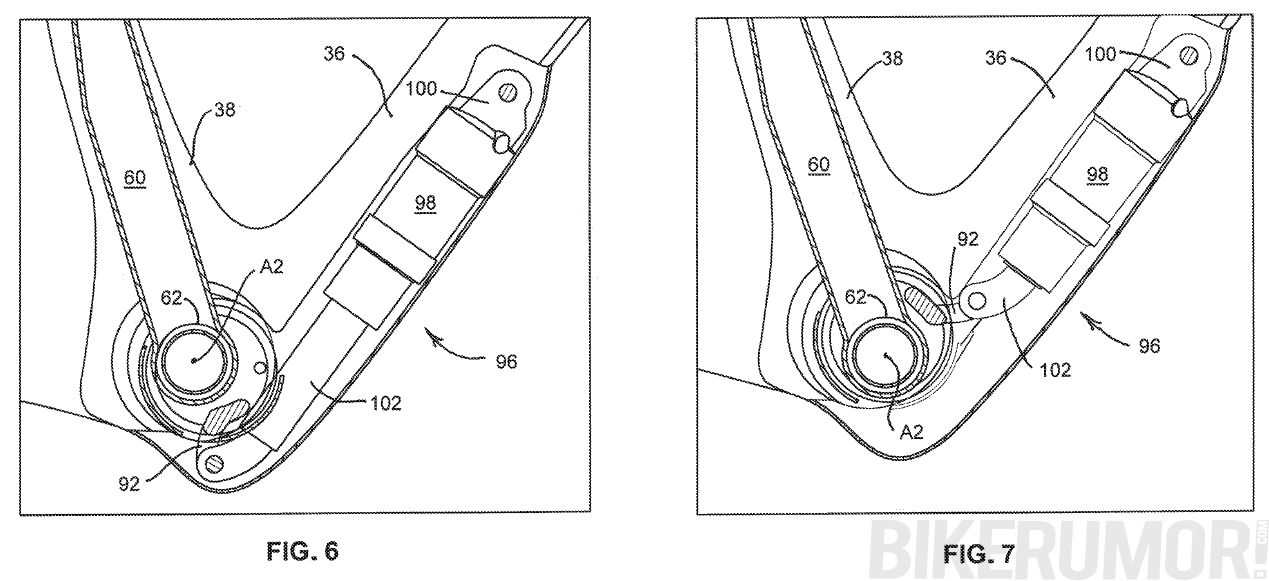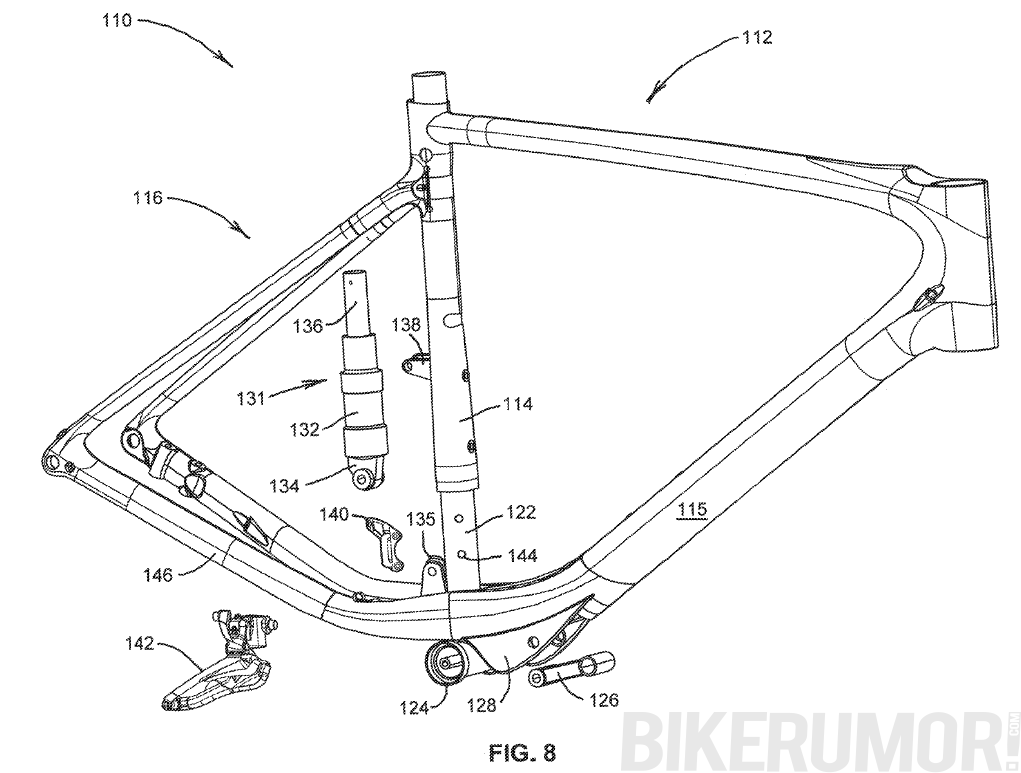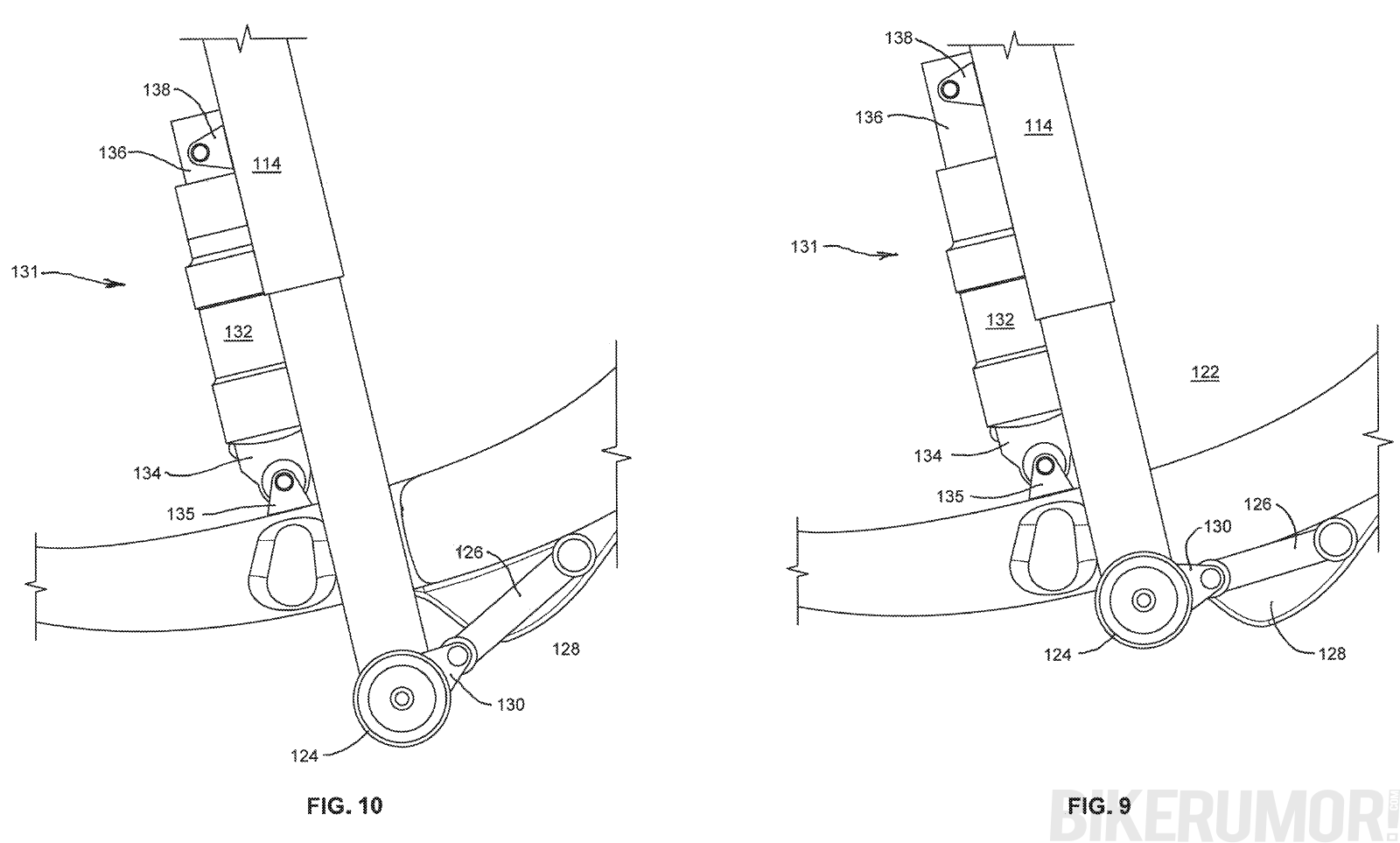The big, crazy, pie-in-the-sky thinking is our favorite kind of thinking, and this collection of patents from Canyon and Specialized are the best kind of throw-out-the-rules design concepts.
Specialized is looking at ways to suspend the cranksets and seatpost inside the frame, and Canyon’s new handlebar, stem, and seatpost designs provide for more ergonomic, comfortable, and aerodynamic options. We’ll start there…
Canyon Racing Handlebar Patent
It’s unfortunate timing that one of Canyon’s pro riders just suffered a broken handlebar as we find fresh drop bar patents from the German direct-to-consumer brand, but that can’t stop progress.
(If you hadn’t heard, on Tuesday, 2 March, 2021, Alpecin-Fenix pro Mathieu van der Poel had part of his handlebar break off, which fortunately did not cause a wreck. Canyon has asked all customers with affected CP0018 and CP0015 cockpits on current Aeroad models CF SLX and CFR, but not CF SL bikes, to stop riding until they can send out a replacement.)
This patent mostly describes a more ergonomic handlebar, but there are three key features worth noting.
The first is a transitional shape (24) that leads into the clamping area for the shifter/brake levers. Ideally, it would meet up with the hoods to create a smoother, “stepless” transition into the hoods.
But, take a look at Fig.3 and you’ll notice it also flares outward to create a broader and more comfortable platform for your hand. Then notice the diagonal line (34), indicating a falling slope to the rear shape of the bars.
Second, it shows an indention (36) at the forward curve of the drops that makes for a very nice thumb rest. We saw this on the recent Coefficient Wave RR handlebar, and it’s quite comfortable. We’ve seen plenty of “aero” and “ergo” handlebars with flat or shapely tops; the big takeaway from this patent is that they’re going way beyond round tubes on the drops and lowers, too.
Third, notice that stem shape in Fig.4, then take a look at this…
Canyon Stem System Patent
This patent shows an inverse relationship between steerer tube and stem. Currently, our steerers extend out from the top of the headset and we slide a stem over it, do our best to align it with the front wheel, then clamp it down.
Canyon’s patent introduces a stem (16) that inserts into the steerer tube (24). This novelty brings with it several benefits. First, it doesn’t have to be round, assuming there’s some sort of sleeved shaping inside the steerer tube, the stem’s insert could be slotted or grooved to allow for perfect steering alignment. On its own, that would be worth it.
But Canyon says it also allows for more aerodynamic connections to the steerer tube and bike while eliminating other “design constraints” of such a system.
“But, Tyler,” you say, “Isn’t this just a quill stem like what we’ve had forever?”
No, no it’s not.
And this is where the design gets really interesting. First, notice that the stem’s insert (16) is much, much narrower than the steerer tube. And it’s not round (Fig.2). Canyon suggests this could let them make it flexible, presumably in a fore-aft direction, which should help it soak up vibrations.
The stem tube would attach to the steerer tube with a screw or pin (20) running between them, with some sort of “clamping stone” (aka spacer or guide) between them. Loosen this and you could slide the stem up or down to adjust your stack height.
Canyon says this could also let you create a very low position…slam that stem!
Of course, to access that fixing screw and set your position, you’d need to access it through a hole (42) in the head tube (40), which would be covered with a plug (44)…or head badge.
Canyon Aerodynamic, Damping Seatpost Patent
Canyon already has a very effective flexible seatpost design that adds good compliance. We reviewed it on the Endurace road bike and really liked it. But it’s round…so how do you add compliance to a deep, oblong aero seatpost?
Simple. You put a fairing on it.
That’s the essence of this patent. Create a seatpost (24) that’s shaped to allow fore-aft flex so it can absorb bumps, then put an aerodynamically shaped cover (14) in front of it. Ideally, they won’t be in direct contact with each other, and none of the bending forces affect or move the cover.
The patent describes a U-shaped rear for the cover, such that it could wrap slightly around the flex post. This would prevent any visible gaps as it flexes, which keeps air flowing smoothly around it even over rough surfaces.
Seems simple, right? There’s more.
Canyon also mentions a damping element (12) adhered to the front of the damping element (aka, seatpost (24)), which would further soak up vibrations.
As for that “S” shape, it puts the lower part of the seatpost further forward, which lets them create a narrower seat tube that can tuck the rear wheel in closer, further optimizing aerodynamics.
Specialized Suspended Crankset & Seatpost Patent
If a flexible seatpost or seat tube aren’t enough, Specialized is looking at ways to suspend the bottom bracket and entire seatpost as a unit.
Ideally, any suspension system would maintain the seat height distance between the center of your crankset’s spindle and the top of your saddle. But, any compression or flex from a seat tube/post is going to change that, as does a suspension seatpost like the Redshift ShockStop.
With this invention, Specialized maintains a consistent seat height measurement by adding a suspension system that lets the bottom bracket and seat post move in tandem.
The patent filing shows two variations, internal and external. Above, the internal hides a small shock inside the downtube.
The bottom bracket is mounted in an oversized, eccentric system that can also rotate, and one end of the shock is attached to that outer cylinder. The seatpost runs the entire length of the seat tube and connects, like a piston, around the bottom bracket’s center axle.
As the rider hits a bump, the rider’s weight pushes the seatpost down, forcing the BB to rotate inside the outer cylinder, thereby compressing the shock.
This design relies on a lot of extra room inside the seat tube, and a lot of moving parts hidden inside a frame, but keeps things much cleaner than the external version:
In this iteration the bottom bracket is mounted to a linkage (126) that pivots from just in front of the BB shell. The seatpost is still connected to the BB, but this time it’s pushing the entire bottom bracket down as it compresses, without an external, eccentric shell.
As you hit a bump, the seat tube would push down (Fig.10) and compress a shock mounted to the seat tube and chainstays. Then, it would return to starting position (Fig.9). The benefit to this design is that most moving parts are external, and it could work with a front derailleur.
Both seem a bit convoluted, with the tube-inside-a-tube and additional BB cylinders or lower linkages adding weight. But, perhaps not too much more weight or complexity than something like Niner’s MCR full suspension gravel bike.
Flexible systems like Cannondale’s SAVE stays or Lauf’s suspension gravel bike frame patent are definitely lighter and simpler, but we still love seeing how brands are trying to create a more comfortable ride.
Patent research assistance provided by Wheelbased.com. Check them out for deeper dives on some of these patents and more.
